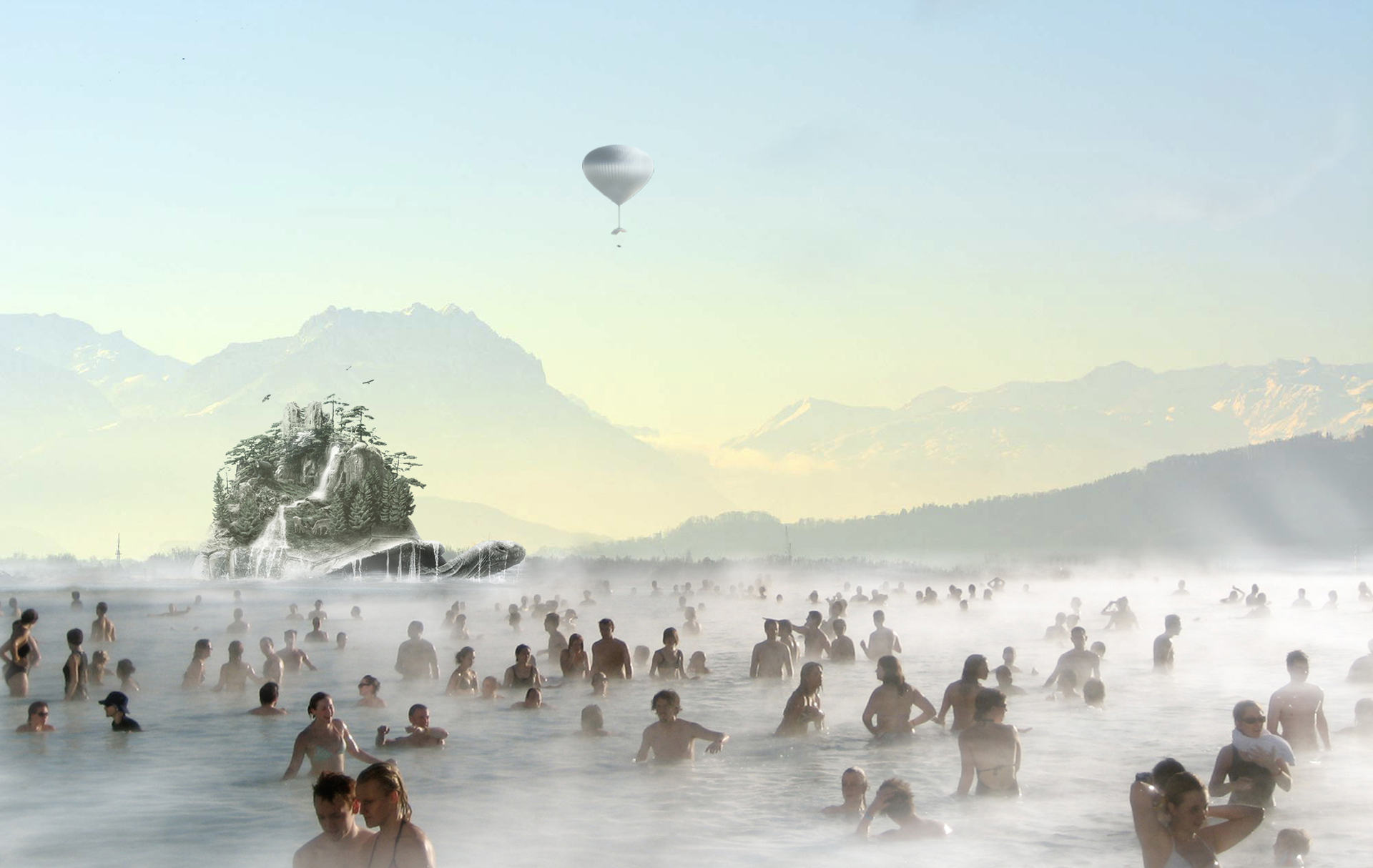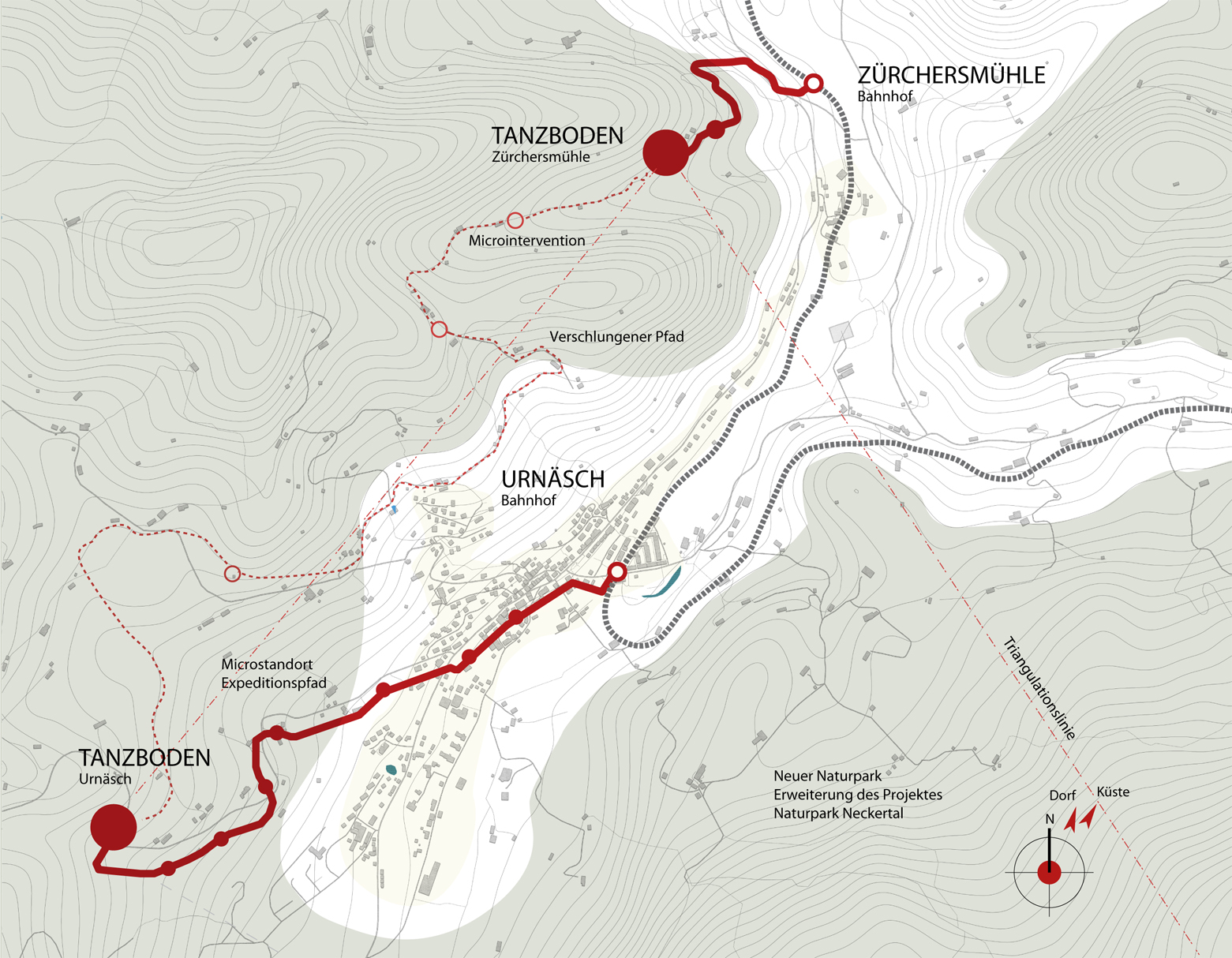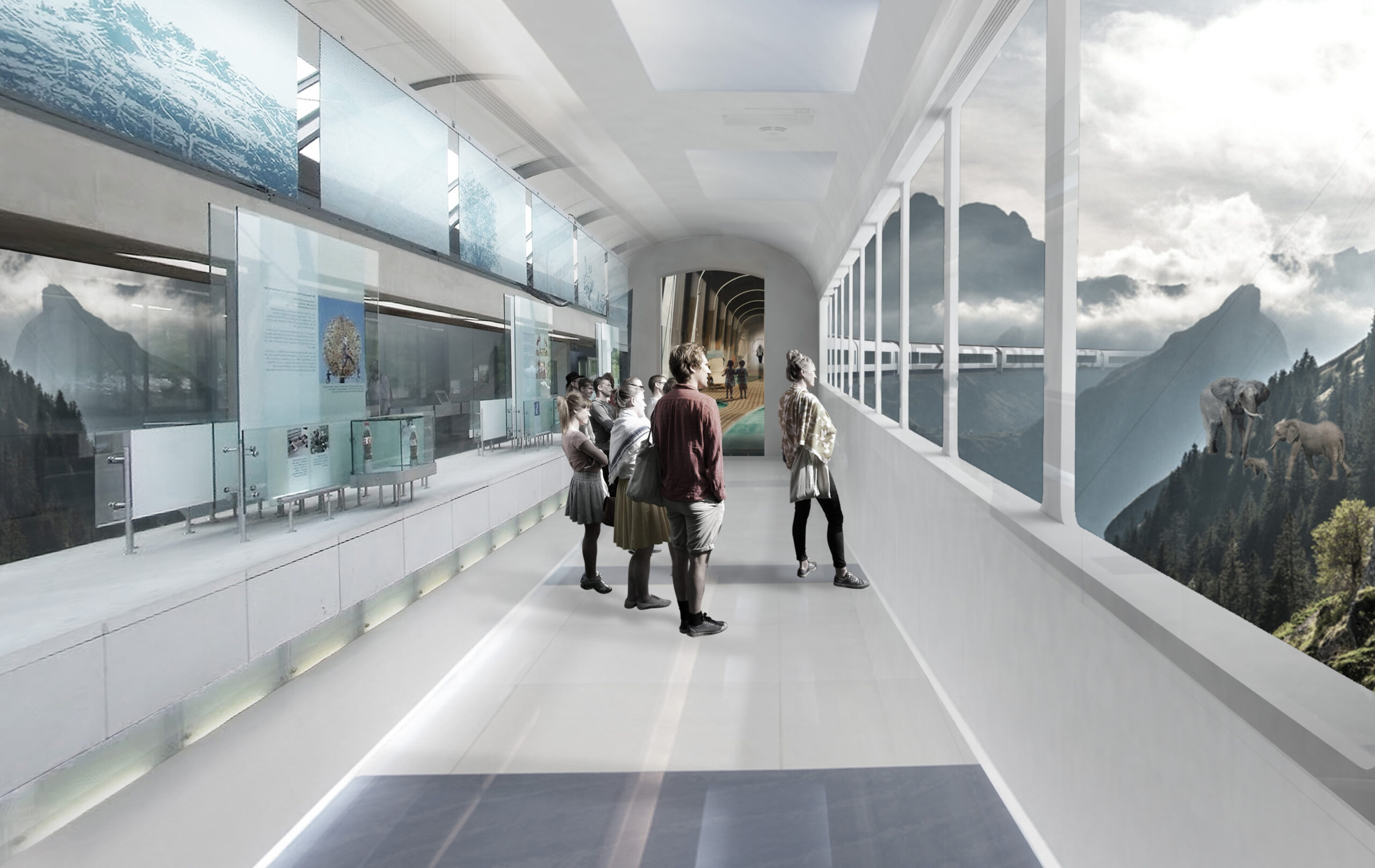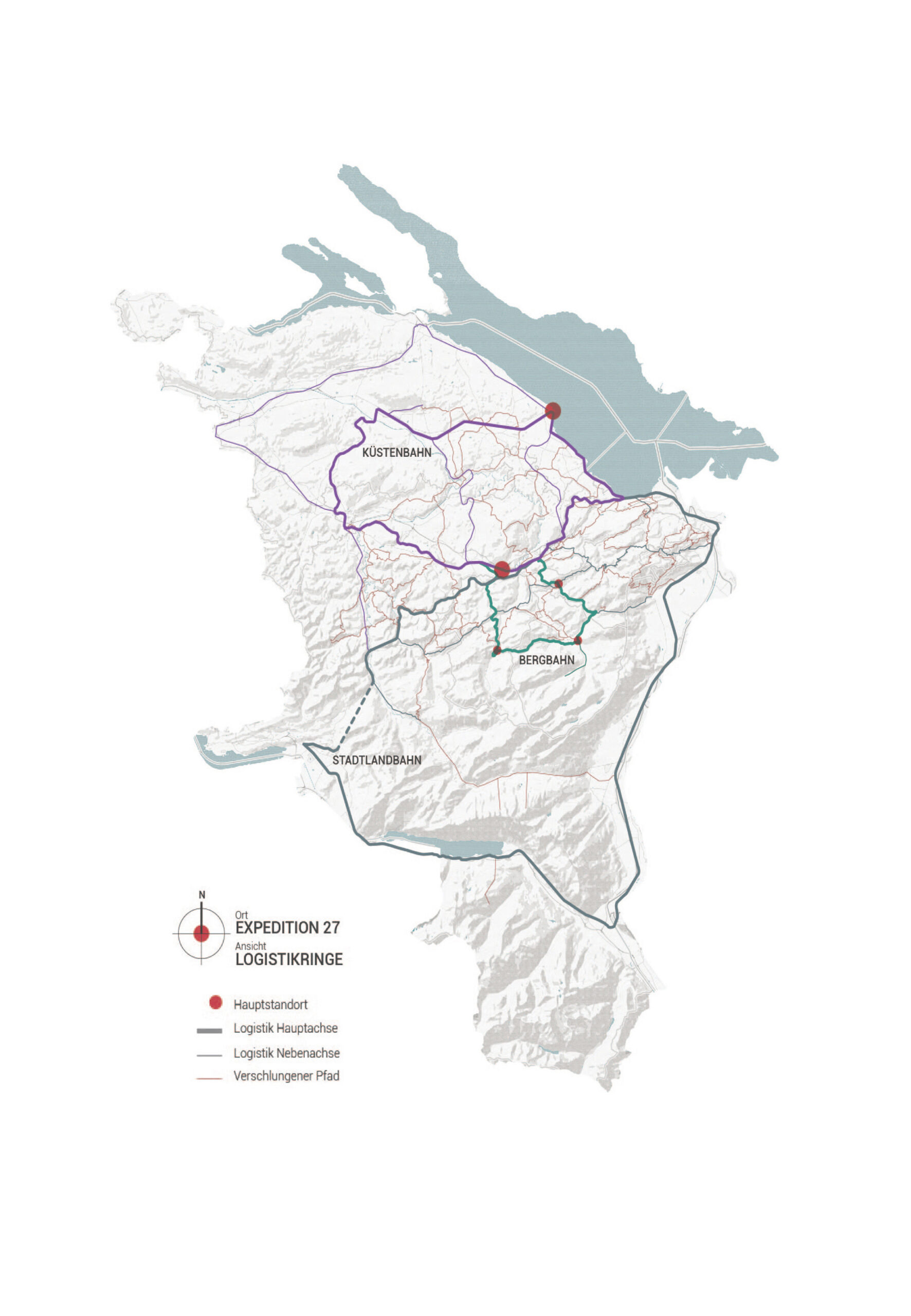As a confederation based more on common sense than on common history, Switzerland uses its national expositions, the “expos”, as platforms for regularly refreshing its national narrative. Earlier expos revolved around identity and national defense (1939), progress and innovation (1964) or creativity and the arts (2002). Expo27 will focus on our lives and living environment (“Lebensraum”). It will look at landscape, space and resources, and the challenge to develop ideas, institutions and infrastructures necessary for their long-term, collective use.
The landscape is stage and scenery, topic and territory for our research journey, Expedition27. Instead of locating themes on designated fair grounds, this expo looks for themes on location. The idyllic landscape of Eastern Switzerland is as full of history, technology and stories as it is of nature. As a microcosm of our earth bound human existence, it talks of the past and the future, of the archaic (“wüescht”) and the civilized (“schön”). As an extraordinary event, it allows for mobilization beyond the ordinary rules to collectively develop this landscape further.
The expo territory is divided into three landscape layers, each with a guiding question. The mountain landscape of the Appenzell asks “where do we come from?”, the urban and agricultural landscape of the St. Gallen agglomeration and the Rhine Valley asks “who are we today?” and the lake landscape with the openness and internationality of the shores of Lake Constance asks “where are we going?”. Each layer is imbued with a series of characteristics, resources and socio-political planning themes which become the content and discourse for the expo. Local residents, artists, politicians, farmers and architects collaborate to reflect upon, narrate and innovate the landscape anew. All of this is connected in an overarching story that consists of a narrative web of old myths, contemporary tales, and future scenarios. These stories guide visitors on their adventures through the expo landscape. The visitors experience the varying narrative strands of the expo either alone or in carefully curated fellowships. Individual and collective adventures bring the landscape to life and make it real. The Expo27, therefore, will be the Expedition27 – three landscapes, two worlds, one adventure!
Location: Bodensee – Northeast Switzerland
Programme: Concept for the Swiss Expo 2027
Commission: International competition, 1st Prize
Landscape: Studio Vulkan
Architect: Hosoya Schaefer Architects
Script Writer: Plinio Bachmann
Visualisations: Hosoya Schaefer Architects
Collaborators: Emch + Berger, Zurich; Integral Ruedi Baur, Zurich; KEEAS Raumkonzepte, Zurich






The Lake
The international waters of Lake Constance thematise vastness, the atmospheric beauty of water bodies, internationality, and water as a resource of the future. Piers thematise the experience of moving from land out into the water and become creative spaces for exhibitions and events. The main question for the discourse here is the future: “Where as a society are we heading?”



The Crossing
The periphery of the city with its highways, train crossings, large semi-industrial buildings and sprawl thematises urbanism, urban sprawl, landscape as a resource in suburbia, modes of transportation, global economy and agriculture. The built element is the street and its potential to become a social space even in suburban areas. The main question for the discourse here is the present: “Who are we?”



The Mountain
The mountain band stands for the rawness of nature, the ecology of natural resources, the magic of nature and her landscapes, history and tradition and issues of tourism. In Swiss tradition, the village dance floor was the place of social
gatherings and performances. This built element, transformed into creative matter, provides a temporary atraction for isolated and dying out villages. The main question for the discourse here is the past and what we can learn from it: “Where do we come from?”

